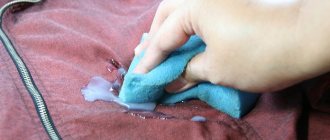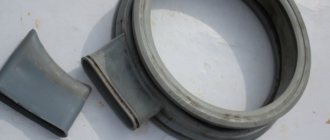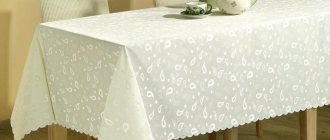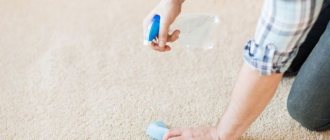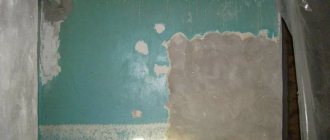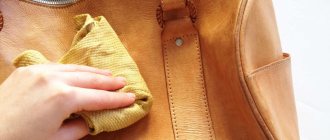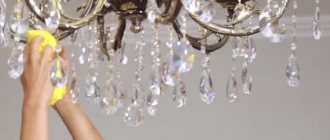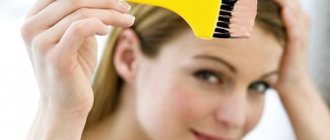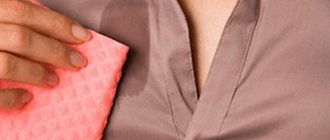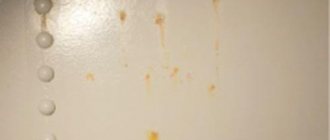Things made of leatherette will look like new for a long time if you provide them with high-quality and regular care. In addition, every housewife should know how to remove streaks and stains from a rather capricious surface.
Many women face difficulties in this area because... Persistent formations are not so easy to remove using gentle means, and aggressive substances negatively affect the quality of the material. In fact, everything is not so hopeless. You just need to know which products work best with which type of stains, and which reagents are best to avoid altogether.
Do's and don'ts
Items made from eco-leather and other synthetic materials require careful care. Depending on the type of contamination, different cleaning agents are allowed.
The following can be dangerous for any product made from eco-leather or leatherette:
- excess moisture;
- exposure to high temperatures;
- cleaning with a steam generator;
- abrasives.
Chemical solvents should be used with caution. Some of them can damage the surface.
You cannot use powdered soda, brushes or hard sponges - they will leave scratches, dirt will penetrate deeper, and it will be impossible to get rid of them. If the surface is glossy, dull spots will remain on it after cleaning with abrasive agents.
Before using any substances, it is better to test on a piece of material or an inconspicuous area of the product!
Tips and Cautions
Before you start searching for how to remove stains on leatherette, you should understand some of the features. One of the key factors is how old the stain is. fresh stains are very easy to remove. Often it is enough to simply wipe off the dirt with a damp cloth. Old, stubborn blots will be more difficult to clean off, especially if they have time to soak in thoroughly. Therefore, it is best to immediately clean leatherette from stains as soon as they appear.
Experts do not recommend using brute force and abrasive agents during the cleaning process. They can damage the surface, deform or simply tear. Old stubborn stains from leatherette cannot be removed with a knife or scissors. This will result in the product being torn or cut. Then the furniture will be completely damaged and returning it to its original appearance will be very problematic.
Also, you cannot use various potent compounds:
The nature of the stain is of great importance when choosing a cleaning composition. The most popular contaminants are ink, grease, dust, and food. Now in more detail about how you can save leatherette products at home.
Daily care
Seats, sofa armrests, and bags made of white material become greasy over time and acquire a yellow tint. Denim clothing leaves bluish or gray stains on the seat. How to wash eco-leather from everyday dirt?
For this you will need:
- laundry soap;
- dishwashing liquid;
- wet wipes for caring for leather items;
- citric acid solution or lemon juice to whiten the surface;
- automotive leather cleaning products;
- melamine sponge eraser.
When choosing a car product for eco-leather, you will have to experiment - not all of them cope with dirty deposits in the same way; sometimes using laundry soap is easier and more effective.
Citric acid or hydrogen peroxide provide good whitening. The second, moreover, kills bacteria, which is useful for animal owners.
Features of removing pens from natural and synthetic leather
If your leather gets dirty, you don’t need to go to the dry cleaner right away. You can often remove it yourself using store-bought cleaning products.
It is important to begin removing the stain as soon as it appears. Old paste is much more difficult to scrub off. Over time, the ink is absorbed and it will be almost impossible to wipe it off.
Before any cleaning procedures, you must adhere to the following rules:
- Do not immediately clean the main surface. It is better to try it on an inconspicuous area. If the method damages the skin, it is better to try other methods.
- Do not immediately start aggressive cleaning, for example, with organic solvents. It’s better to try more gentle methods, and then go for a promotion.
- Even the leather on your sofa can begin to dry out and crack. This comes from dehydration and can be further nourished. After washing, it is better to go over the damaged areas with glycerin syrup or castor oil. They will nourish the skin and it will shine.
- The product should dry only at room temperature. The use of a hair dryer (especially an industrial one) is strictly prohibited. This will cause cracking and drying out.
- Almost all stain removers damage the skin. Therefore, it is imperative not to deviate from the instructions and comply with its standards.
In addition, regular ballpoint pens are much more difficult to clean off. They contain oil that prevents the pigment from being removed. Gel and feather pastes are easier to remove.
Leatherette
Everyone has a leather substitute in their home. Its composition requires more careful handling, since any mechanical damage can lead to its peeling. The surface layer will begin to separate and the product will be damaged.
Under no circumstances should you use:
- Alkaline, acid and chlorine preparations. These are good solvents for some materials, but they are very damaging to leatherettes.
- Nefras. A petroleum solvent, such as white spirit, interacts with plastic types of leather substitute, dissolving them.
- Industrial, mineral, synthetic and semi-synthetic oils.
- Turpentine. This wood resin solvent has the property of dissolving polyvinyl chloride, polyacetate and polyurethane.
- Bleaches. Together with the paste, they will also remove a layer of paint from the surface of the substitute.
- Abrasives. Mechanical damage to leatherette is contraindicated, as it immediately bursts and can no longer be used.
Genuine Leather
All restrictions that are also present in artificial leather apply to natural leather. But you should follow a few additional rules:
- Natural leather should not be wetted. It is advisable not to use a wet cloth to wipe off solvent or stain remover. This may result in bubbles and uneven tone. It is best to use a slightly damp cloth or special wipes for caring for leather clothing and products.
- Cleansing with Vaseline and Glycerin. After cleaning has been done, you need to wipe the area with Vaseline oil or glycerin syrup. This will get rid of drying out and cracks.
How to properly wash a leatherette product?
Eco-leather does not need to be wet much; all work is carried out with a wrung-out cloth. For washing you need a soft sponge and two dry cotton or microfiber cloths. You need to wipe off the dust first so as not to roll the fluff across the surface.
The procedure is as follows:
- Apply a small amount of cleaning solution or foam with a sponge. Rub gently.
- Remove the composition with a clean damp cloth.
- Wipe with a dry cloth to remove any remaining moisture.
- Apply a protective agent with silicone - it softens the surface, adds shine and forms a film that prevents contamination. Be sure to wipe off excess with paper towels.
Unfortunately, housewives also have to wash more complex stains. Tips for removing common stains will help keep your white finish clean.
Traces from pens and felt-tip pens
If there are children at home, the question of removing traces of their art sooner or later arises in every mother. Fortunately, modern felt-tip pens can be easily washed off with water, but the same cannot be said about ballpoint pens and markers.
Ballpoint pen ink is the most difficult stain to remove. They must be removed as quickly as possible so that the dye does not become embedded in the coating. If the ink is not dry, there is a chance to wash it with soap and a melamine sponge. After drying, you can whiten the surface stained with a pen in several ways.
- Method 1. Nail polish remover. Cleans off fresh ink, markers, and gel pens.
- Method 2. Hairspray. Apply, wait a couple of minutes, wipe off with a cotton pad, repeat if necessary.
- Method 3. Leather polish and solvent for polyurethane glue. First, treat the surface with polish or conditioner to protect it, wait 5 minutes, and then wipe the stain with a solvent. When used correctly, this treatment removes even old hand marks without harming the leatherette.
Methods using slaked soda, alcohols, and citric acid will remove the ink of gel pens and water-alcohol-based markers. Since ballpoint pen paste has a wax-fat composition, these methods will be ineffective for it.
And finally
In order for things made of dermantine to serve as long as possible and delight you with their beauty for a long time, you need to provide them with proper care. The main requirements are as follows:
Thus, to remove even an old stain from leatherette, you can get by with simple home remedies. Their use will not only allow you to complete the task, but will also eliminate exposure to harmful chemicals.
It doesn’t matter if yellow stains appear on your down winter jacket after an unsuccessful wash. To cope, It happens that you have to wash vomit stains from upholstered furniture or clothing, and, It is very difficult to clean a mattress from red stains and the smell of urine, but there are methods. You can. Removing stains is always a long and labor-intensive process, especially if it concerns traces of food or
Drink Stains
At home, it is quite possible to wash traces of drinks from a white sofa. The main thing is to act quickly so that the liquids do not have time to be absorbed.
- Use a dry cloth or napkins to collect any remaining spills from the surface. If you don't have paper towels or a rag on hand, you can sprinkle salt, then collect it along with the absorbed drink.
- Wipe the stained area with hydrogen peroxide, an aqueous solution of vinegar or citric acid, if the pigment remains. The proportions of 9% vinegar to water are the same as when using acid: one to one.
- After treatment, wash the leatherette with soapy water or wipe with damp cloths, dry the surface with towels.
How to clean leatherette from household dirt?
- Dilute ammonia with water.
- Soak a sponge in the resulting solution.
- Treat the stain with it.
If you don't know how to remove ballpoint pen marks from leatherette, try using regular hairspray or window cleaner:
- Hairspray should be sprayed onto a cloth or onto the dirt itself.
- Rub well.
- If the stain does not disappear the first time, repeat the procedure.
How to remove traces of oil paint, for this you will need purified turpentine, it should be used as follows:
- Soak a clean rag in turpentine.
- Rub the stain until it disappears.
- Prepare a soap solution and soak a sponge in it.
- Treat the cleaned area with a soapy sponge.
- Afterwards, rinse off any remaining foam with water.
- Dry the product.
For example:
- Glycerin soap is used to remove chocolate stains.
- Traces of bitumen and resin on leatherette will disappear after cleaning with a sponge soaked in 90% ethyl alcohol or turpentine oil.
- To clean leatherette from stains of red wine and other drinks, you need to moisten a sponge in diluted vinegar or soap suds.
- A melamine sponge will help you get rid of traces of markers on leatherette furniture - just rub the stain with it until it disappears completely.
- You can remove grease stains and grass stains from leatherette with natural lemon juice. Lemon juice will quickly remove dirt and add shine to artificial leather.
For high-quality and gentle removal of stains from leatherette items, it is recommended to use narrowly focused products rather than universal approaches. This will not only achieve the desired result, but also not affect the color, texture, or density of the material.
- Blood stains. If the formations are fresh, you should try to wipe them off with a cloth soaked in cold water. Dried dirt should be thoroughly moistened with 3% hydrogen peroxide applied to a cotton pad and left for a couple of minutes. The dirt will dissolve and you only need to wipe the surface clean. Old stains can be removed in the same way, but it is better to use a weak soap solution with the addition of a few drops of 5% ammonia.
- Alcoholic drinks, fatty sauces. In this case, the optimal solution would be soapy water with the addition of vinegar (no more than a tablespoon of caustic product per glass of water).
- Plasticine, resin, chewing gum. Traces of them can be removed with ethyl alcohol, the main thing is to wet the surface more and rub less.
- Fruit and vegetable juices, jams, preserves. Here you will need a soap solution, but with 10% ammonia or citric acid, previously diluted in water.
- Coffee, chocolate, tea. On the stains you just need to apply thick foam obtained by whipping the soap composition. After all the bubbles have burst, carefully wipe the surface with three damp cotton pads and rinse thoroughly with clean water several times so that there are no streaks left.
- Cream, oil, lipstick. Small stains can be removed using a soap solution. To clean a large area, you will have to use turpentine or ethyl alcohol. In this case, we do not simply wet the formations, but, as it were, collect them, working from the periphery to the center.
- Nail polish. Even large stains can be easily removed with nail polish remover without acetone or other aggressive reagents.
- Oil paint. First, the surface is treated with turpentine oil. After the main dirt has come off, use a soap solution, and then a large amount of clean water. If necessary, repeat the approach.
- Ballpoint pen ink. The most common table salt will help here. It is good if it is small, otherwise you can scratch the material. The product is added to a soap solution that is applied to the stain. To be sure, you can add more salt on top and leave for several hours. Then remove the entire composition and wipe the leatherette with clean water.
We suggest you read: Removing yellow spots under the arms on white things at home
In cases where the type of stain is not entirely clear, cleaning should begin with a regular soap solution. If the approach does not help, we gradually add auxiliary components, starting with the most gentle ones (soda, salt) and moving on to more aggressive ones (alcohol, turpentine).
Products for different types of stains
Leatherette and eco-leather are popular because of their practicality. This coating is washable and does not require complex maintenance. Most stains can be easily removed with soap, but some stains will require a little more effort.
- Food stains - greasy marks, chocolate - are washed off with dish gel marked “Anti-grease” or laundry soap.
- Stains from berries and grass should be bleached after washing with citric acid or hydrogen peroxide.
- The blood is immediately washed off with cold water, and a cotton pad with ammonia is placed on old stains. Then scrub, adding ammonia as needed.
- Nail polish, acrylic paint, brilliant paint are washed off with nail polish remover.
- Chewing gum and plasticine are first carefully wiped off with a gauze swab, and the residue is removed with alcohol.
- Gouache and watercolor can be washed with liquid soap and a melamine sponge.
- Oil paint can be wiped off with turpentine.
Contaminants on leatherette and methods for removing them
A favorite item can be ruined by putting stains of various origins on it. For every stain, there is an effective method for removing stains from leatherette. The main types of contaminants and the means that help get rid of them are as follows:
- Plasticine or chewing gum is removed from the surface using ethyl alcohol, which is used to soak a cotton pad;
- The blood is washed off with hydrogen peroxide (fresh stains) or ammonia-soap solution (dried stains);
- Cosmetics - foundation, eye shadow, powder - are removed after using a mixture of ammonia solution, alcohol and soapy water;
- Mustard and alcoholic beverages are washed off the dermantine using diluted citric acid or a mixture of “vinegar essence and laundry soap solution”;
- Oil-based paint can be removed with turpentine oil; treatment with a gentle detergent is required;
- Green grass stains, unpleasant yellowness - lemon juice combats all this, plus the product adds shine to the product;
- Fatty products that leave oil stains (lipstick, creams, vegetable oil) are removed with turpentine and alcohol, if the stain is old, otherwise ordinary natural soap will help.
If the housewife is faced with the question of how to remove stains from fruit juices or tomato-containing products on leatherette, then a mixture of ammonia with a neutral detergent will be the ideal assistant for her. Be sure to rinse the surface with water after the procedure.
Rules for removing stains
Paradoxically, furniture and things made of white leatherette have advantages over colored ones, because when scrubbing their surface, there is no risk of washing off the dye and getting a lightened stain.
7 simple truths about stain removal:
- It is easier to remove fresh stains.
- All stain removers must first be tested on an inconspicuous area of the product.
- Do not scrape off dirt or use abrasives.
- It is necessary to erase traces of brush, paints, and brilliant green, moving from the edges to the center.
- When removing a stain, you need to change the cotton pads more often so as not to smear the dirt.
- Cotton balls should be proportionate to the size of the stain. It is better to remove some stains with cotton swabs - this will reduce the area of treatment, and therefore the risk of rubbing off pigmentation and damaging the surface.
- Eco-leather conditioner will help protect a white sofa, armchair, and chair upholstery - it must be applied after each wash. The silicone film on the surface will prevent the absorption of dirt.
When purchasing items made from leatherette, it is advisable to ask the seller about the type and composition of the material, and also to keep the flap that the manufacturer attaches to the label of the product or furniture. On this piece you can test the effect of stain removers, if necessary.
Eco-leather is used to produce car covers, furniture coverings, and sew jackets, skirts, and trousers. Products made from artificial fabric look stylish, sofas and armchairs made from exclusive material that looks like genuine leather decorate the interior of apartments and offices, giving the room sophistication and comfort. In order for upholstery made of synthetic fabric to please you with a luxurious look and serve for a long time, you need to know how to care for it and how to clean white eco-leather if stains and stains appear on the covering.
A proven recipe for removing stains from white leatherette
How can you remove stains from white leatherette without harming the material and without losing the brightness of the contaminated area? The ideal proven remedy is ammonia solution. Recommended proportions: 1 teaspoon of product per 250 ml of purified water. The contaminated area must be moistened with the resulting mixture, rubbed with a sponge or soft brush, and left for several minutes. After rinsing, you can treat the surface with glycerin.
Another way to remove stains from white leatherette:
- Treat the contaminated area with baking soda;
- Squeeze the juice of half a lemon onto the soda, wait for an active reaction;
- Remove all residues with a sponge;
- Wipe dry with a cloth.
Regardless of which method and product is chosen to clean an artificial leather product, the contaminated surface must be cleaned of dust and wiped thoroughly. If you take care of things correctly and deal with stains in a timely manner, the attractive appearance of the product will last for a long time.
Eco-leather is used to produce car covers, furniture coverings, and sew jackets, skirts, and trousers. Products made from artificial fabric look stylish, sofas and armchairs made from exclusive material that looks like genuine leather decorate the interior of apartments and offices, giving the room sophistication and comfort. In order for upholstery made of synthetic fabric to please you with a luxurious look and serve for a long time, you need to know how to care for it and how to clean white eco-leather if stains and stains appear on the covering.
Main pollution and their causes
When buying a light skirt or dress, purchasing a sofa or chair made of artificial material coated with a layer of polyurethane, you must not forget that white items will have to be cleaned often. Leatherette allows air to pass through well, but quickly becomes dirty, a coating forms on it or yellowness appears, and stains remain:
- from watercolor and oil paint;
- gouache and felt-tip pens;
- from plasticine and pens;
- food and chewing gum.
Dust accumulates on the surface of eco-leather, leaving traces from the paws of pets. The fabric can be cleaned normally, but you need to choose the right product.
What is harmful to artificial leather?
The natural material from which shoes, clothing, and furniture upholstery are made is durable and elastic, but is expensive, and animals are killed for its production. The basis for eco-leather is cotton fabric, onto which polyurethane is applied.
The artificial material does not cause allergies, is not afraid of ultraviolet rays, is durable and wear-resistant, and does not become hard in the cold.
High humidity
Eco-leather does not allow water to pass inside. The machine is not suitable for washing products made of two-layer material; the dirt on them is not washed off with water. Strong humidity has a negative effect on fabric.
Heat
Eco-leather allows heat to pass through well, products made from it do not fade in the sun, but they overheat strongly; washing in hot soapy water is not recommended.
Cleaning with a steam generator
Synthetic fabric with a polyvinyl chloride coating is not inferior in technical characteristics to leather, looks similar to natural material, but if not properly cared for, it loses its attractiveness. You cannot clean products made from it with a steam generator.
Abrasives
If you wipe eco-leather with a hard brush or pumice stone, scratches, microcracks, and small cuts appear on the surface. The fabric is damaged when cleaning with abrasive materials and does not tolerate chlorine.
Daily care rules
Furniture upholstery and clothing made from light eco-leather remain attractive and do not wear out for a long time if the products are regularly and properly cared for:
- Remove dust with a damp cloth.
- Wipe off dirt with napkins made of calico, microfiber, or flannel.
- Treat with a water-repellent compound every 6 months.
- Polish to restore shine with creams intended for natural leather.
When cleaning stains, do not press on the surface of the car seat cover or upholstery. A sofa or chair made of two-layer material should be installed away from radiators, making sure that direct rays of the sun do not fall on things.
How to wash properly
White eco-leather gets dirty quickly, products made from it can be washed, but you should not make rough movements or rub with force. Stains on things made of artificial material should be removed immediately after they appear, using a soft sponge or foam rubber.
Soap solution
Eco-leather is cleaned in different ways, dirt is removed using household products, but formulations containing chemicals are not used, as they can react and damage the material. To wash white artificial leather, you need to soak a sponge in liquid and then apply the product.
To remove grease stains from upholstered furniture, strollers or skirts:
- The bucket is filled with water.
- Add crushed laundry soap and beat it into foam.
- Foam rubber is moistened in the prepared composition and applied to the contaminated area.
Eco leather is wiped with the soft side of the sponge. After removing traces of grease, the material is dried with a cloth.
Ammonia and dishwashing detergent
It is not always possible to remove old stains on white furniture and light-colored clothing using liquid and laundry soap. The contaminated surface is moistened with a solution of a glass of water and a spoon of ammonia, rinsed and washed with Fairy dish gel, and lubricated with glycerin.
How to remove dark spots on light skin?
Ink and paint stains can be removed with glycerin by thoroughly rubbing it into the stain. If the product is made of light leather, then a second stage will be needed - after rubbing glycerin, apply wet table salt to the stain and leave for a day. For white skin, use a mixture of table salt and baking soda.
Interesting materials:
How to cook Obabki correctly? How to pump up your abs correctly and effectively? How to use rust converter correctly? How to correctly measure hip volume? How to measure your waist correctly? How to correctly measure the length of a dress? How to correctly measure the volume of the lower leg? How to drip Mildronate correctly? How to properly store gasoline in a barrel? How to properly store your bra?
Recommendations for cleaning in special cases
You can accidentally spill coffee or tea on clothes or furniture upholstery, or stain artificial leather with berries, paint, or blood. To wash away fruit stains, remove food residues, and clean chewing gum, various methods are used.
Marks from pens and felt-tip pens
When a family has small children, drawings made from paste and markers appear on the white upholstery of a sofa or sofa. To remove such “paintings,” add fine salt to the soap solution, apply the composition for several hours, and rinse with clean water.
Nail polish remover
If this method fails to remove pen marks, you have to use alcohol and clean the felt-tip pen with turpentine. Treating the paste with nail polish remover that does not contain acetone helps to remove the paste. The solvent negatively affects the structure of eco-leather; it is used when other means have not given a positive result.
Hair fixation spray
It is necessary to clean products from ink and paste using gentle methods, but if they turn out to be ineffective, aggressive liquids are used. To get rid of fresh marks, hairspray is sprayed over the surface of the artificial leather. After a few minutes, it, along with the felt-tip pen and gel, is removed with a napkin.
Leather polish and solvent for polyurethane glue
Baking soda, ethyl alcohol, and citric acid remove ink stains and traces of markers; ballpoint pen paste contains wax, which cannot be cleaned with such products.
Conditioner or leather polish is applied to the surface of the sofa upholstery; after 5 or 10 minutes, the contaminated area is wiped with a solvent for polyurethane glue.
Drink Stains
Tea or coffee spilled on eco-leather should be immediately blotted with a dry cloth, a paper napkin, or sprinkled with salt, which should be collected when it absorbs the liquid. Traces of compote or soda are wiped off:
- citric acid;
- hydrogen peroxide;
- diluted vinegar.
After cleaning the stains of tea, beer or lemonade, the artificial leather is treated with a soap solution. The surface of the material is dried with a cloth or towel.
Food contamination
Residues from food, greasy deposits, traces of chocolate, honey on products and upholstery made of eco-leather are removed with laundry soap and dishwashing liquid.
Stains from berries, grass
Light-colored clothes made of artificial material can easily be covered with strawberries or currants, or green plants. You can also get rid of these contaminants. Traces of berries are washed off with citric acid or citrus fruit juice, and bleached with hydrogen peroxide.
Blood
It is not recommended to soak eco-leather furniture upholstery, skirts and dresses, car covers; stains are washed off with laundry soap, but old traces of blood are cleaned with a cotton swab dipped in ammonia. Fresh stains are washed with cool water.
Nail polish or paint
Eco-leather clothes stained with brilliant green should not be thrown away. You can get rid of such stains and return the product to its original appearance. Wipe off the antiseptic and acrylic paint with the liquid that is used to seal the nail polish. The work must be done carefully so as not to damage the structure of the material.
Chewing gum and plasticine
Mask stains on light-colored eco-leather furniture by wiping with milk mixed with raw protein. Toothpaste is applied to the stained area, left for a quarter of an hour, and removed with a napkin. To remove stuck chewing gum and clean the surface of plasticine, wipe the material with a cotton swab, dipping it in alcohol.
Gouache and watercolor
Children paint the upholstery of an eco-leather sofa not only with felt-tip pens and a ballpoint pen, but also with water-soluble paints. To remove a drawing from a watercolor, traces of gouache, dip a melamine sponge into liquid soap, and wipe the problem areas.
Oil paint
Fresh stains on light artificial leather can be blotted with a paper towel, and then, by combining a liter of water with 30 ml of dishwashing gel, remove any remaining dirt. Dried oil paint is wiped with a sponge soaked in turpentine.
How to clean light-colored leatherette?
You need to be most careful when working with light-colored items. If wet wipes do not help, we try to remove the contamination using one of the following methods:
- Lemon juice. Take a fresh lemon, cut it in half, squeeze the juice into a container, strain the liquid. Soak a cotton pad in it, wring it out and apply it to the contaminated surface. Let it sit for at least 20 minutes, dripping a few drops of juice onto the surface of the disc every three minutes. Then remove the cotton swab and lightly rub the stain with a soft damp sponge, rinse everything off with clean water.
- Milk. When the contamination is superficial, it is enough to rub it thoroughly with milk at room temperature. If this is not enough, add lemon juice to the milk and repeat the manipulation.
- Citric acid (acetic acid). In half a glass of water, dilute half a teaspoon of citric acid or a teaspoon of table vinegar. We wipe the resulting solution several times, but do not rub the stain.
- Ammonia. To 2 parts of lukewarm water, take 1 part of ammonia and half a teaspoon of glycerin, mix well. Apply the composition to the stain and wait until it dries. Then rinse it off with clean water, wipe it with a cloth and, if necessary, repeat the manipulation.
Once the surface is finally cleaned, it should be blotted repeatedly with soft, dry wipes to remove as much liquid as possible. If you leave the leatherette to dry on its own, it can thicken and dry out, which will immediately affect its appearance.
Rules for removing stains
Any product that will be used to clean covers, furniture upholstery, and eco-leather clothing must first be tested on a less noticeable area. To ensure that products made from the material look well-groomed and retain an attractive appearance:
- Do not clean old stains with abrasives.
- You need to wipe off traces of paint, paste, and felt-tip pen, starting from the end and ending with the center.
- Disks made of cotton wool and sticks must be constantly changed so as not to smear dirt on the surface.
White artificial leather is treated with a conditioner, which creates a film that protects the product from dust settling and prevents the absorption of fat and pigment.
How to care
Caring for synthetic material with a polyurethane coating has its own characteristics. Eco-leather clothes do not become hard or crack; the upholstery retains its shape if you wash things by hand and not in a machine.
Products cannot be cleaned with compounds that contain aggressive acids or sodium chloride.
Dust that has settled on the surface of artificial leather must be regularly removed with a wet cloth; do not soak the two-layer material in water. You should rub stains not with a brush, but with a foam rubber or melamine sponge. It is not recommended to dry synthetic leather clothes in the sun, with hot air from a hair dryer, or to place sofas near radiators or electrical appliances.
Light-colored material turns yellow over time; citric acid, a mixture of milk and egg white, and hydrogen peroxide restore the color. To prevent contamination, dust accumulation, and soften eco-leather, after each cleaning the surface is treated with a conditioner containing silicone, which forms a protective film.
Useful tips
- Remember that a fresh stain is easier to remove than an old one.
- Avoid unnecessary friction on the surface of the leatherette.
- Do not use abrasive cleaners on artificial leather.
- Regular cleaning of leatherette furniture will help avoid serious contamination.
- You can add shine to the product using a silicone-impregnated sponge; it also forms a protective film.
- Before you begin cleaning your leather, test your chosen product on an inconspicuous area of the product. If there is no skin reaction to the product, then you can proceed to complete surface treatment.
- If you are afraid to clean leatherette yourself, then use the services of specialists; it is better not to risk it.
What types of leatherette are there?
Before you start cleaning, it is important to decide what type of leatherette your upholstery is:
- vinyl artificial leather - can be cleaned with almost any means that does not contain solvents;
- Apatek is a rather capricious material, cleaning should be careful and gentle;
- eco-leather - provides a special choice of products and strong moisturizing is not allowed.
In general, any type of leatherette requires special attention and will not tolerate aggressive cleaning. When cleaning it is prohibited:
- heavily moisturize the upholstery;
- use too hot water and dry with heating devices (hair dryer, iron);
- clean with a steam cleaner;
- use abrasive (powder) products and rough, hard brushes.
Also, when cleaning leatherette chairs, you need to be especially careful when using products containing solvents, chlorine, acetone, and acids. Before applying any such composition, it must be tested on an inconspicuous area of the upholstery to avoid negative consequences.
How to properly clean a leatherette chair
Cleaning a leatherette chair seems like a difficult task only at first glance. Of course, any owner worries about what the result will be after using one or another cleaning method, and whether it will harm the upholstery, ruining the appearance of the chair. Once you have decided to return the furniture to cleanliness, remember some simple rules that will help you avoid troubles:
- Before starting cleaning, wipe the entire surface of the chair with a slightly damp, clean microfiber cloth to remove the top layer of dust and small debris;
- use only soft brushes with medium-hard bristles (you can use an old toothbrush if the material is porous);
- prepare paper napkins in advance to immediately remove excess moisture and dirt;
- if you use a soap solution, try not to add detergent in large quantities, so as not to cause white streaks to appear;
- after cleaning, rinse the leatherette chair with clean water several times to remove as much soap as possible;
- start washing the chair from the back, gradually moving to the seat, and then to the legs;
- Pay special attention to hard-to-reach places (seams, joints of leatherette with the chair frame, buttons).
How to clean leatherette
When choosing a product for cleaning a leatherette chair, it is better to give preference to special formulations designed specifically for this material. The peculiarity of such products lies in the gentle components that are included in the composition and gentle action. Some owners even use the product to clean car seats, because as you know, many interiors are lined with leatherette.
Of course, if you do not bring the condition of the stool to a critical level, then you can use improvised means. For example, you can very easily clean the surface of leatherette in the following way:
- grate a small amount of laundry soap;
- Dissolve the shavings well in slightly warm water;
- Using a soft brush or dish sponge, clean the chair using gentle movements;
- blot the upholstery with paper napkins to remove all dirt;
- rinse with clean water and blot again with paper;
- leave until completely dry.
How to clean a white leatherette chair
A chair made of white leatherette looks, of course, chic. Especially if the furniture is stylishly matched to the appropriate interior. But on such upholstery you can often notice dirt and stains, which does not fit into the overall picture of comfort and cleanliness. To wash light-colored furniture, you can use several methods, both using store-bought household chemicals and using improvised means.
Ammonia and dishwashing detergent
Take 15 ml of ammonia, 5 ml of dishwashing detergent and mix the ingredients well in 200 ml of warm water. Soak a soft sponge in the mixture and treat the leatherette chair. Individual stains can be gently rubbed with a soft brush or the back of a sponge. Once the entire surface of the upholstery is cleaned, it must be wiped with clean water.
In this case, we mean store-bought products in the form of an aerosol. The main component is active foam. It is applied to the leatherette, evenly distributed over the chair, and left for a while to absorb all the dirt and stains. Sometimes the product doesn’t even need to be washed off. Its peculiarity is its soft action and the presence of special components that maintain the softness and elasticity of leatherette.
Wet wipes
When purchasing wet wipes, be sure to check that they are designed for cleaning leatherette furniture. The packaging must contain a specific definition of the type of upholstery, as well as instructions for use. Typically, such wipes are used when the degree of stool contamination is low and preventative care is needed. But in some cases, they helped to completely remove stains from the upholstery, for example, from coffee, tea, felt-tip pen and even blood.
If it was not possible to wash a leatherette chair, and there are still stains or stains on its surface, then in this case it is better to contact a dry cleaner. There, with the help of professional equipment and tools, they will quickly put your furniture in order.
Nuances of removing stains from leatherette: comments and recommendations from experienced housewives
The complexity of the question of how to remove stains from leatherette depends on the intensity of the contamination and the degree of absorption into the material. Fresh stains can be easily removed using special wet wipes for artificial and natural leather. You can read on the packaging about how to remove stains from leatherette. This product effectively removes minor dirt and dust.
Please note that scraping off dried dirt is not recommended. In addition, if a problem arises about how to remove a stain from leatherette, you cannot use the following means:
- Plumbing and dishwashing detergents containing strong alkalis and acids;
- Solvents;
- Detergents containing petroleum products.
Old dirt can be easily removed using a soap solution with a neutral pH, a brush with soft bristles or a damp cloth. The surface is wiped dry. If this does not help, then you can use other proven means.
